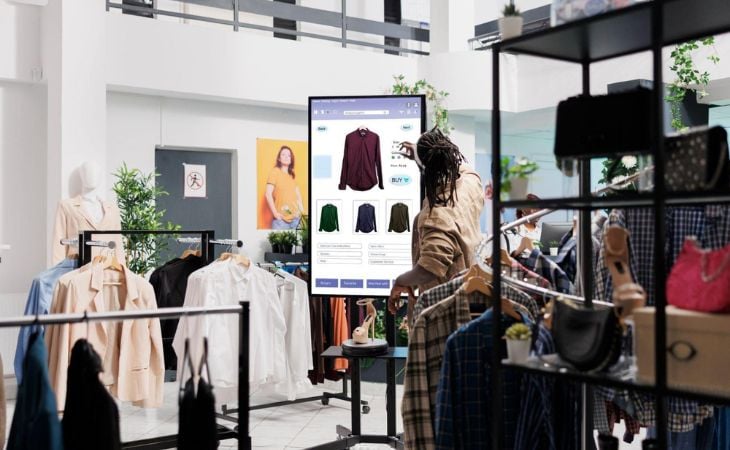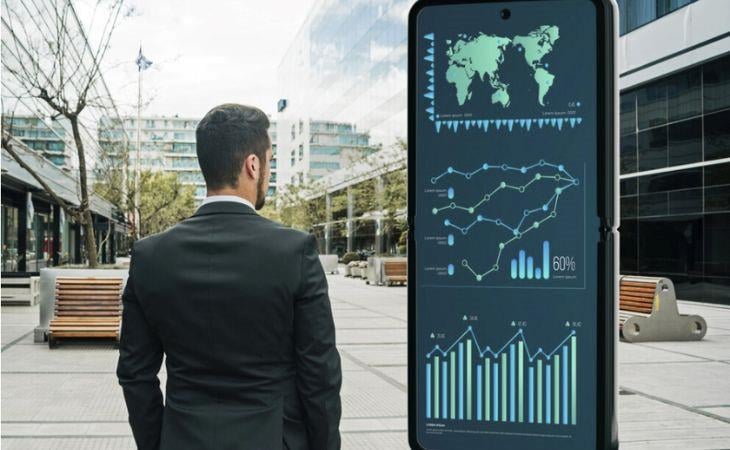
How Often Should Digital Signage Content Be Updated
A lot of businesses invest in digital signage only to end up displaying stale content that their audience is tired of seeing. Although digital signage has the advantage of being convenient to use for marketing, advertising, or other purpose, it’s not something that you should just set and forget.
Digital signage is specially designed to deliver fresh and engaging content. Its biggest selling point is its modifiability — you can change the displayed content anytime you want, anywhere you are. It’s only by utilizing this feature effectively that you can maximize your investment and guarantee results.
There lies the importance of updating your digital signage content and ensuring you’re showing your audience something new every time. But how often should you be changing and updating your display?
How Often Should You Update Digital Signage Content?
As a general rule, the recommended frequency of updating digital signage content is 2-3 times per day.
But this isn’t hard-set because there are a lot of considerations that affect content duration, such as the type of message, the complexity of the message, the content cycle speed, the length of your message, how new the concept is, how many screens you have, etc.
Two factors stand out as valuable in identifying how often you should update your digital signage content: your audience and your display’s location.
Think of Your Audience

The key to a good marketing and communications strategy is knowing who your audience is. Being familiar with their demographics, interests, pain points, and behaviors will help you create content that targets and resonates with them.
It shapes not only your message but also determines what content you should be showing them at a particular time of day to keep them engaged.
Consider Your Display’s Location
Your display’s location is directly aligned with its purpose and consequently, how often you should be updating your content.
Screens placed at a restaurant, for example, act as digital menu boards that need to display new content every couple of seconds. Digital signage placed in an office lobby showing a company’s logo, mission, and vision, probably doesn’t need to be updated as frequently.
Consider your display’s location, its purpose, and audience, to determine how often you need to be changing your content.
Tips to Keep Digital Signage Content Fresh
While the frequency of your content updates will depend on your target audience, location, purpose, and goals, it’s good practice to keep your digital signage content fresh and engaging. Here are some tips to help you develop your own approach to updating your digital signage.
Create a Content Calendar
A content calendar is a non-negotiable in a digital signage campaign. You need to plot the content you need to publish per day, week, or month, so you don’t get caught up trying to think of what to publish in a rush.
Crafting a content calendar for your digital signage is as easy as jotting down your content plan in a spreadsheet. When you do, take note of important holidays, celebrations, or business events, and make sure you create special content for them!
Follow the Three-Exposure Rule

The three-exposure rule, developed by Dr Herbert Krugman while working on GE advertising in the 1960s, states that audiences require three exposures to new content to understand a message.
Each exposure should have a purpose — the first aims to catch the audience’s attention and ignite curiosity, the second is when the audience evaluates the message’s value, and the third serves as a reminder to take action.
This provides businesses with a solid guideline for updating their digital signage content. By ensuring their audience sees new content three times, they can better communicate their message and generate results.
Regularly Change Your Message
Following the three-exposure rule, updating your content three times a day is the best way to maximize viewer engagement. The easiest way to accomplish that is by changing your message in the morning, afternoon, and evening.
That way, no matter what time your audience views your display, they see something new that sparks their interest and provides them with new information.
Schedule Content
Changing your message and content three times a day sounds like a lot of work. But with powerful digital signage software, it really isn’t. Your software or digital content management system should allow you to schedule content to go live at different times of day, some with the capacity to allow scheduling a week or month ahead.
Scheduling content automates the work involved in updating your digital signage so you won’t have to scramble to make new content live every so often.
Keep Content Simple
The more complex and elaborate your content is, the harder it will be for you to generate fresh content to display on your screens. That’s why it’s important to keep your content simple.
Try to avoid complex animations and designs. Instead, create content that requires minimal effort to draw up. If a message can be communicated with concise text, you don’t need heavy graphics in your design.
Use Live Media

Keeping your digital signage content fresh doesn’t necessarily mean you have to create new content to deploy every time. You can take advantage of live media like RSS feeds, social media feeds, live dashboards, etc. to get your display moving throughout the day.
You can consider these as fillers that give you a little breather from generating new content to show your audience. The good news is that live media is not only engaging but can also provide value to your audience, depending on the type of live content you choose to broadcast.
Group Your Screens
For businesses that manage a network of 10, 20, or even hundreds of digital signage screens, updating content for each one might seem overwhelming. Instead of updating the display for each of your screens manually, you should have a mechanism that allows you to publish content across your multi-screen digital signage network.
A fast strategy is grouping your screens by specific parameters, such as location. Most digital signage software has screen grouping capabilities, making it convenient to bulk publish content to multiple screens remotely.
Test and Measure Results
To help you determine if your digital signage content is effective at communicating your message and generating your intended results, you have to measure its performance. Conduct test runs and determine your KPIs to assess your campaign.
Also, take advantage of digital signage analytics to get valuable data on view counts, dwell time, and screen interactions. This information should help you identify which content types are most effective and shed light on areas you need to improve and modify for the best outcomes.
Maximize Your Digital Signage with Fresh Content
Keeping your digital signage fresh is key to maximum viewer engagement. To stay on top of your content updates, you need to be utilizing free digital signage software.
Rise Vision provides you with an intuitive platform to manage your digital signage, whether it’s one screen or multiple.
Our software’s features make it easy for you to create, deploy, and update content whenever and wherever you need to. Learn more about our solution by booking a free demo.
More From Our Blog
-

How to Use PowerPoint for Digital Signage
To create stunning, attention-grabbing, and effective digital signage content, you need the help of content creation and presentation tools. One of the most popular is Microsoft PowerPoint, owing to[…]
Read More -

120 Digital Signage Content Ideas
So…. you decided you would invest in some digital signage software and you need some ideas for ways you can make it stand out. This article is your go-to source for the best digital signage content[…]
Read More -

2025 Digital Signage Benefits and Statistics
The digital signage industry has been growing steadily for years now, and it shows no signs of stopping anytime soon. Businesses all over the world are investing in digital signage systems, be it for[…]
Read More
Keep Your Displays Interesting – Pick New Templates Every Week!
Every week, we send template recommendations that will make you look great and improve your audience experience. And the best part, they save up to 16 hours of content creation time every week!
12,300+ Organizations Trust Rise Vision, You Can Too
Schedule a Free Demo
You deserve the #1 all-in-one platform for digital signage, screen sharing, and emergency alerts.



































